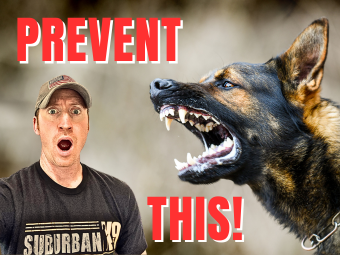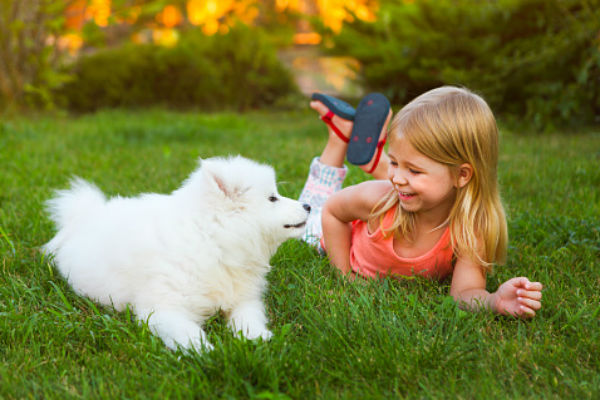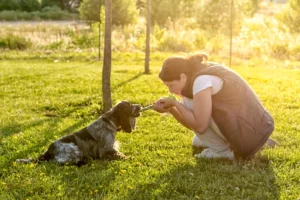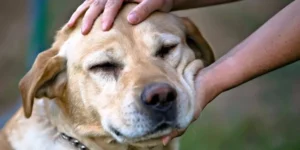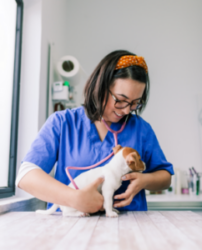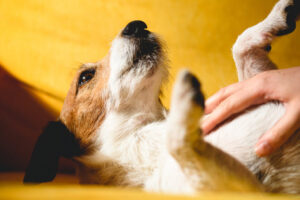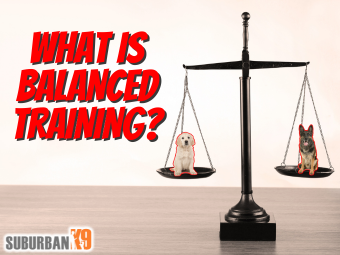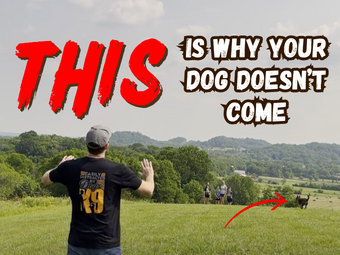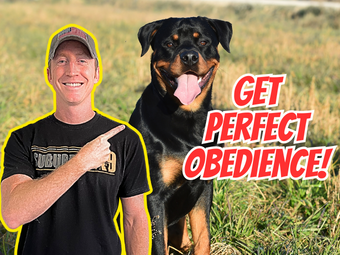Proper socialization and handling are crucial aspects of raising a well-rounded and emotionally healthy puppy. By introducing them to various handling exercises, you can help prevent aggression, fear, and anxiety later in life.
In this comprehensive guide, we will delve into the importance of puppy handling exercises and provide valuable insights on how to incorporate them into your puppy's training routine. From gentle touch and grooming to positive reinforcement techniques, we will explore effective strategies for fostering a positive association with handling, promoting socialization, and ensuring a harmonious bond between you and your furry companion.
The Significance of Puppy Handling Exercises
Do you want to know one of the easiest ways to prevent your puppy from becoming aggressive as they get older? The answer is puppy handling exercises! Handling exercises with a young puppy is one of the most important things you can do with them; it plays a vital role in shaping your dog's behavior. By exposing puppies to positive handling experiences from an early age, you can foster trust, confidence, and a healthy relationship between you and your pet.
These exercises help puppies become familiar with human touch, grooming routines, and everyday activities, ensuring they are comfortable and well-adjusted in various situations. Additionally, proper handling and socialization contribute to the prevention of fear-based aggression, as puppies learn to associate handling with positive experiences, reducing the likelihood of defensive responses later in life.
Establishing a Positive Association During Puppy Handling Exercises:
To establish a positive association with handling, start with gentle touch and massage. Introduce your puppy to slow and gentle strokes, gradually increasing the pressure and duration as they become more comfortable. Use soft voices and rewards to reinforce calm behavior during the process. This exercise promotes relaxation, reduces anxiety, and helps your puppy associate physical touch with pleasure and security.
Desensitization to Sensitive Areas is also important. Puppies may have sensitive areas such as ears, paws, or tails. Gently touch and manipulate these spots, rewarding your puppy for remaining calm and relaxed. Pair these exercises with treats or play to build trust and positive associations.
Nail trimming and paw handling exercises are essential for maintaining your puppy's hygiene and preventing discomfort. Start by touching and holding your puppy's paws without applying pressure. Gradually introduce the sensation of nail clippers or a nail file, rewarding your puppy for tolerance and calm behavior. Make nail trimming sessions positive and rewarding experiences, associating them with treats or playtime.
Positive reinforcement with praise and play is invaluable in building trust and confidence during handling exercises. Reward your puppy for remaining calm, allowing handling, and displaying relaxed body language. Use a calm and reassuring tone of voice to communicate that handling is a positive and rewarding experience. This positive association helps create a bond built on trust and sets the foundation for future training.
Puppy Handling Exercises Promote Socialization and Reduce Aggression
Socializing your puppy with different people and environments is essential for their overall behavior and temperament. Encourage friends and family members to handle your puppy gently and offer praise and playful interaction with toys. If the puppy seems afraid, give the stranger treats to attempt to break the puppy out of its shell.
Gradually introduce new environments, such as parks or busy streets, ensuring positive experiences with different sights, sounds, and smells. These socialization exercises reduce fear and anxiety, helping your puppy become well-adjusted and confident in various social settings.
Encourage positive interactions with other animals by arranging playdates with well-behaved and vaccinated dogs in controlled environments. Monitor interactions closely, ensuring positive experiences and preventing negative encounters. Positive interactions with other animals contribute to the development of appropriate social skills and reduce the likelihood of aggression or fear-based behavior.
Familiarize your puppy with various situations they may encounter in their daily lives. This includes experiences such as car rides, visits to the veterinarian, or being handled by unfamiliar people. Gradually introduce these situations, ensuring positive associations through rewards like praise and play. By familiarizing your puppy with common occurrences, you reduce the likelihood of fear or aggression arising from novel or unfamiliar experiences.
Familiarize your puppy with common household noises to prevent fear or anxiety responses. Start with low volumes and gradually increase the intensity. Expose your puppy to sounds such as vacuum cleaners, doorbells, or kitchen appliances. Pair the sounds with rewards and play to create positive associations. This exposure helps your puppy become desensitized to everyday noises, reducing the likelihood of fear-based aggression in response to sudden or loud sounds.
Common Challenges and Solutions
If your puppy displays fear or anxiety during handling exercises, approach these situations with patience and understanding. Take gradual steps, keeping sessions short and positive. Use rewards and positive reinforcement techniques to build confidence and create positive associations with handling. If fear or anxiety persists, consult a professional dog trainer or behaviorist for additional guidance.
Not all puppies will immediately embrace handling exercises. Some may exhibit resistance or nervousness. In these cases, start with small, non-threatening actions, such as gentle touch or massage. Gradually build trust and progress to more challenging exercises. Stay calm, patient, and consistent throughout the process. Seek professional assistance if your puppy continues to display significant resistance or fear.
What Should I Do During Puppy Handling Exercises?
For us, handling exercises are focused on handling a dog’s body and their resources! Having a good handling plan from when they are young and through their lives will prevent major issues related to resource guarding from occurring. A lot of dogs resource guard, but typically puppies do not. A ton of clients do their best job when their dog is young, then simply stop when their dog is doing well. Unfortunately, six months later, when their dog hits adolescence, big issues can arise.
The first thing we worked on in this video is handling your dog's body. This is meant to work on handling everything that a vet visit would include, with some other things thrown in as well. Luckily, this process is easy as you can incorporate this during playtime. You should focus on picking your dog up, messing with their paws, checking their ears, looking under their tail, and working on waking them up when they are sleeping.
During this process, we like to put dogs in the settle position. This works on self control and teaches dogs to relax. You want to make sure they are not getting up when they decide to. At first, most puppies struggle, but it's a struggle worth having! This can be a great way to get your dog calm as well for other situations in the future! If you work on these handling skills every day, your vet will thank you!
Handling resources is just as important! You should focus on taking away their resources and petting them when they have their food, toys, and bones. If you see any signs of stress or resentment, call a trainer or make sure you are doing more of this! If you think your puppy is showing issues, fix it now!
When you are handling your dog's body or food, you need to make sure you have a good plan. For young puppies, we work on this every day. If they are doing well, around four months old, we will move to 3-4 times a week, and when they hit 8-9 months, we do twice a week. For the rest of your dog's life, maintain your handling exercises twice a week to ensure issues never come back!
We hope this video helps you out! Keep in mind this process is meant for all ages, but if your dog is older or you have a new rescue, make sure you are going about this safely. That means either getting a trainer or using a leash and collar. This process is meant to prevent issues, not to fix resource guarding. If you have any questions on these handling exercises or any other dog training questions, be sure to reach out for a instant quote to work with one of our amazing trainers! We look forward to hearing from you!
Conclusion
Puppy handling exercises are invaluable for preventing aggression, promoting socialization, and building a strong bond between you and your furry companion. By introducing positive handling experiences, promoting socialization, and addressing common challenges, you set your puppy on a path of emotional well-being and confident behavior.
Remember to be patient, consistent, and understanding throughout the process. With the right training techniques, early socialization, and a focus on positive reinforcement, you can help your puppy grow into a well-adjusted and sociable adult dog, ready to embrace the world with confidence and good manners.
